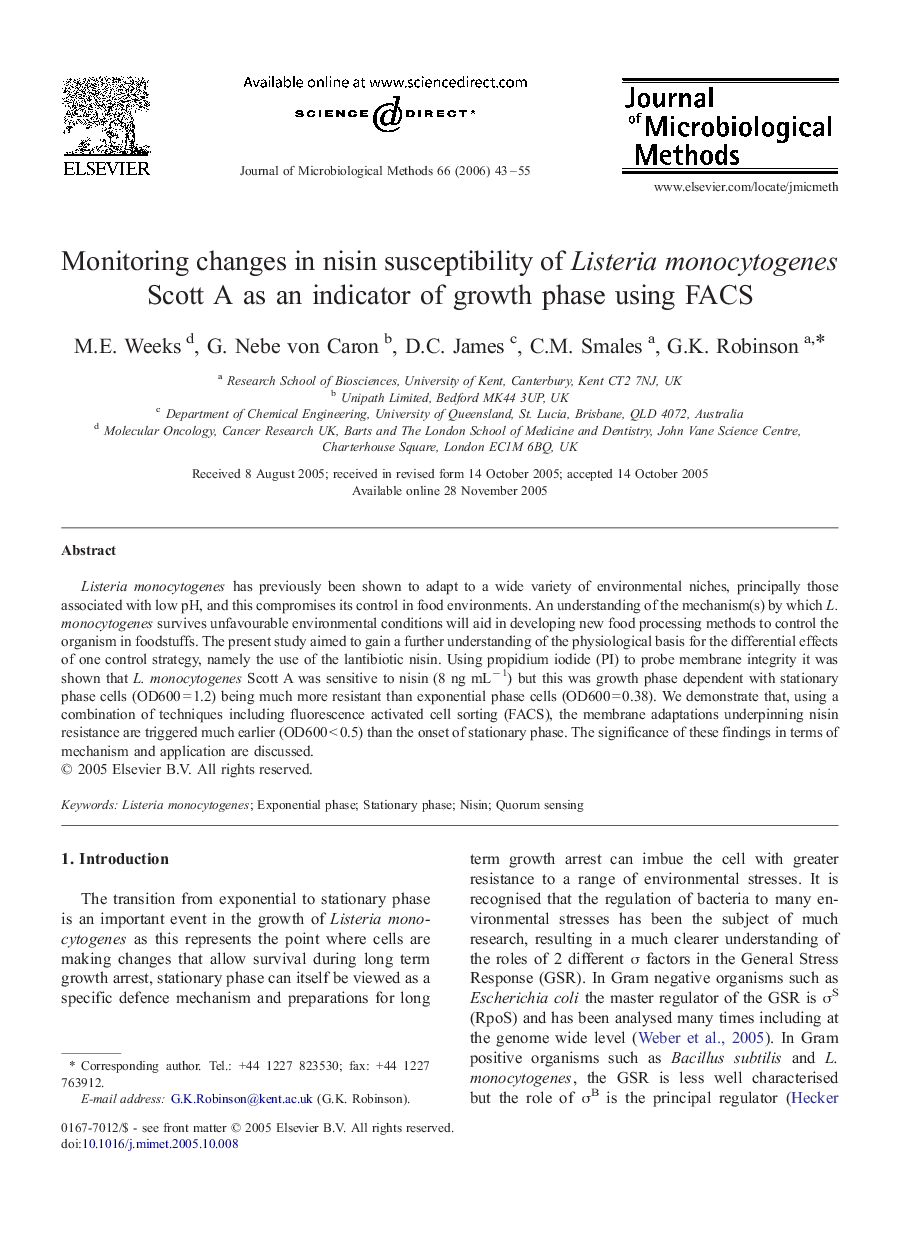| Article ID | Journal | Published Year | Pages | File Type |
|---|---|---|---|---|
| 2092075 | Journal of Microbiological Methods | 2006 | 13 Pages |
Listeria monocytogenes has previously been shown to adapt to a wide variety of environmental niches, principally those associated with low pH, and this compromises its control in food environments. An understanding of the mechanism(s) by which L. monocytogenes survives unfavourable environmental conditions will aid in developing new food processing methods to control the organism in foodstuffs. The present study aimed to gain a further understanding of the physiological basis for the differential effects of one control strategy, namely the use of the lantibiotic nisin. Using propidium iodide (PI) to probe membrane integrity it was shown that L. monocytogenes Scott A was sensitive to nisin (8 ng mL− ) but this was growth phase dependent with stationary phase cells (OD600 = 1.2) being much more resistant than exponential phase cells (OD600 = 0.38). We demonstrate that, using a combination of techniques including fluorescence activated cell sorting (FACS), the membrane adaptations underpinning nisin resistance are triggered much earlier (OD600 < 0.5) than the onset of stationary phase. The significance of these findings in terms of mechanism and application are discussed.
